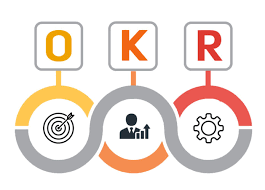Setting and Achieving Goals – An Introduction to OKR

OKR is a goal-setting framework that helps individuals, teams and organizations define measurable goals. It is often compared to KPI, but it is more complete.
Objectives describe ambitious goals that propel the company in a desired direction. Key results are measurable milestones that support the objectives. They are typically reviewed weekly or at midcycle in an OKR review meeting.
SMART Goals
A great goal is specific, measurable, actionable, realistic and time-bound. This helps set you up for success by verifying that your goals are attainable, setting milestones and measuring progress, and making sure that the goal is relevant to what you want to accomplish.
An example of a SMART goal is, “I will learn how to type without looking at the keyboard.” This objective is measurable because it gives you a way to measure your progress and evaluate if you have met your objective. It is also actionable because you can break down the skill into smaller tasks and steps. It is a realistic goal because you know that you can achieve this in the given time frame. Finally, it is relevant because it aligns with your skills and long-term goals.
Objectives
An objective describes a company’s vision and goals and is designed to propel the team in the desired direction. It should be qualitative in nature, measurable, and attainable. Key results, on the other hand, delve into the numbers and metrics of an objective and are typically more quantitative.
For example, an objective could be to raise $100,000 by a certain date. A key result could be to start a round of investment.
When paired together, objectives and key results create an OKR framework that encourages efficiency, transparency and strategy alignment across the organization. This is especially beneficial for companies with remote workers, as it enables teams to communicate effectively and promotes accountability. It also ensures that lower-level employees’ key results are aligned with higher-level objectives.
Key Results
A key result is a quantitative goal that breaks down a company objective into specific benchmarks. It is designed to propel the organization towards a vision. Just like SMART goals, the key result should be measurable, verifiable, and time-bound.
Ideally, a company should have an objective for every department, group or team and at least one key result for each goal. This helps with priority setting, accountability and transparency.
It also makes it easier to learn and iterate. A good practice is to have internal OKR masters who moderate, support and take long-term responsibility for the process. Moreover, it is important to communicate about the goal setting process so employees know how it works at all times. For example, during weekly meetings and one-on-one conversations.
Timelines
A key aspect of OKR is the timelines it sets for goals. This helps ensure that goals are ambitious and aligned with company-wide goals. It also helps create a cadence for goal-setting that encourages progress, rather than stagnation.
The objective portion of an OKR is a qualitative goal designed to propel the organization in the desired direction. The key result portion, on the other hand, dives into the numbers and measurable aspects of the goal, similar to a KPI.
Typically, it’s best to write objectives first and then break them down into key results. This way, teams can have a full picture of what the key metrics are and how they relate to one another. This also allows for flexibility and the ability to change course.
Accountability
Aspirational and committed OKRs can both be effective, but it is crucial to communicate clear goals to ensure that all team members understand what is being measured and how they can contribute. Using the simple formula of “we will [objective] as measured by [key result] via [initiatives],” helps teams define their priorities and ensures that they have clear paths to success.
Aspirational OKRs are often referred to as stretch goals and can push teams beyond what they know is possible, while committed OKRs represent outcomes that the team agrees should be accomplished. Ideally, the CEO will own the top goals of the organization, and key results can be cascaded from there, so that teams can collaborate on goals and achieve greater organizational alignment. This is how companies like Google successfully execute their desired strategies through simple, collaborative goal setting.